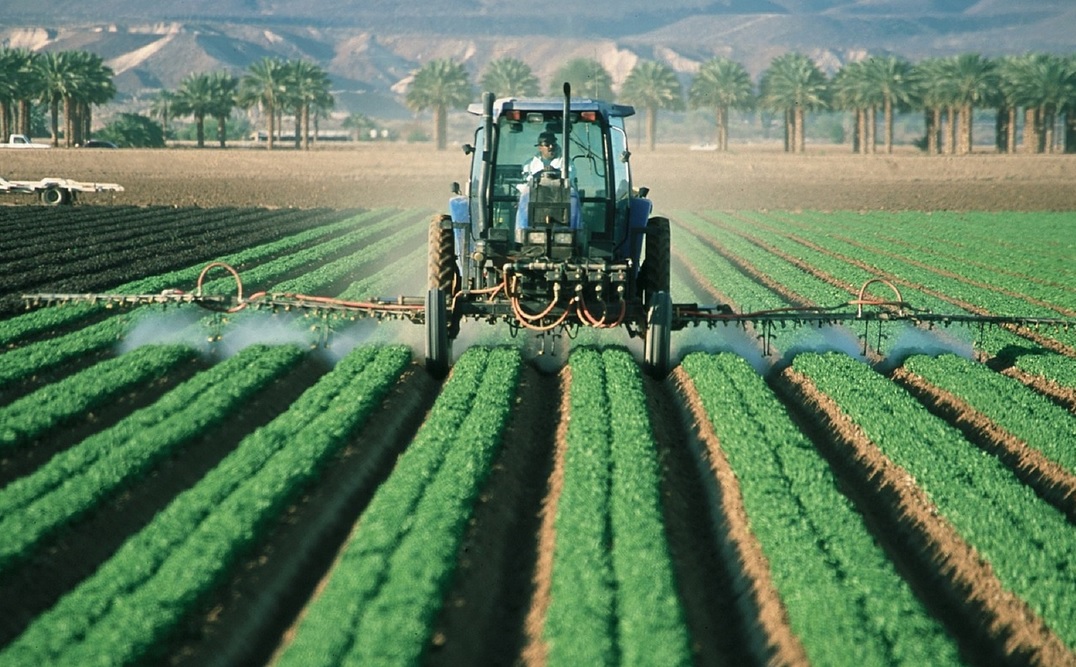
By Oregon State University Extension Office,
Nick Andrews, Oregon State University Extension Service’s organic vegetable specialist, is one of the university’s resident experts on cover crops and a founding board member of the Western Cover Crops Council
Cover crops are not grown to be eaten or sold — rather they are grown to improve farm conditions. “Cover crops can protect soil from erosion, improve soil tilth, supply nitrogen, reduce weeds, provide nectar and pollen for beneficial insects, increase the winter survival of mycorrhiza, compete with weeds and provide other benefits,” said Andrews.
Unfortunately, establishing cover crops can be hard, especially in October when vegetables are still in the ground. That’s why the practice of interseeding — incorporating cover crops into production crops during the growing process — shows promise.
“Many of our favorite vegetables are still in the field in October. I wouldn’t expect anyone to terminate a beautiful crop of tomatoes, eggplants, corn, squash, or peppers in September in order to plant a cover crop,” explained Andrews. “Interseeding cover crops into standing vegetables opens up exciting possibilities.”
Over the past few years, Andrews has been exploring interseeding equipment to make it easier to establish cover crops for small- and mid-sized vegetable growers. The problem? The price tag for the specialized equipment is in the “$30,000 or more range,” said Andrews.
“We are trying to get it down to the $10,000 range and find equipment that can also perform other functions on the farm like direct-seeding vegetables, or side-dressing fertilizer.”
Engineering the solution
Like any good expert, Andrews knows when to ask for help. Thankfully OSU has a new generation of engineers ready to tackle the problem.
Engineering capstone students — seniors in OSU’s College of Engineering — apply their skills to real-world issues, from product design to prototyping to long-term strategy. This year four of them put their skills to the test in the world of cover crop technology, specifically interseeding, by creating a prototype that could be used for fertilizer side dressing — which deposits fertilizer under the soil. It also had to be affordable for Oregon’s small- and mid-size vegetable growers.
Three students of mechanical and manufacturing engineering — Tyler Phelps, Spencer Von Flue and Michael Crain — and mechanical engineering student — Teagan Maloney —jumped at the opportunity to work on this applied capstone project.
“I was drawn to the hands-on aspect of it.” Phelps said, “It had a tangible effect. Ultimately, it’s impacting small farmers and make an impact on local farms.”
The team “liked being directly involved with the consumer,” Phelps said.
Commercial interseeding tractors are made for larger scale farming out in the Midwest. Both in price and scale they do not fit with the needs of smaller farmers, so Andrews has been experimenting with smaller scale technology that can mounts to tractors farmers already have.
“When we were handed this off, most of our team had little to no idea about interseeding and any of the technology that went into it,” explained Von Flue when the students demonstrated the prototype at OSU Organic Winter Cereals and Cover Crops Field Day in June.
“There definitely was a big learning curve for the team developing that initial knowledge of farm equipment, technology and lingo,” Phelps said. “That made it a challenge — so did the budget of $800.”
“The capstone team was given that [fertilizer side dresser] skeleton and asked: can you make it better?” Phelps explained.
“We had of all kinds of different concepts,” said Von Flue, “Expensive stuff, not expensive stuff. This is our brainchild.”
A successful project
The practical nature of the project made it “a lot of fun,” Phelps said. While other engineering seniors spent their capstones in classrooms, they found themselves out on a farm. They didn’t just get to design their prototype, they made it, tested it and improved it.
“We got to use power tools and welders,” Phelps said with a sparkle in his eyes.
That being said, “there’s also challenges in the assembly section,” said Phelps. “When you put stuff together, seldom does it go according to plan.”
They still walked away with success. “We got a 30% performance increase on this,” Von Flue announced with pride. Some of their improvements included dirt shielding, improved wheels and depth-adjusted tines that help incorporate the seed into the soil.
You won’t be able to find their creation on the market anytime soon, but that wasn’t the immediate goal.
“Our work was building a blueprint that farmers can use however they want. Maybe they take one idea, maybe they use all of them,” Phelps said, explaining that they wanted it to be something producers could put together on their farms and personalize to their needs.
“Their ideas for improving this equipment were elegant, and they implemented it well,” said Andrews, sharing that he planned to continue to incorporate feedback the students gave at the end of the process. One farmer has already borrowed the equipment to use on their farm.
All four engineering students graduated from OSU this June. “We didn’t win any capstone specific awards,” Phelps admitted, sharing that those awards tend to go to teams who “shoot rockets and build racecars.” But the satisfaction of helping the local community outweighed any formal accolades.
“The end goal is to make this technology more accessible to small farmers,” Phelps said, “It felt good to do something helpful. From my perspective, if you can help someone out that’s a good place to start.”
Disclaimer: Articles featured on Oregon Report are the creation, responsibility and opinion of the authoring individual or organization which is featured at the top of every article.

